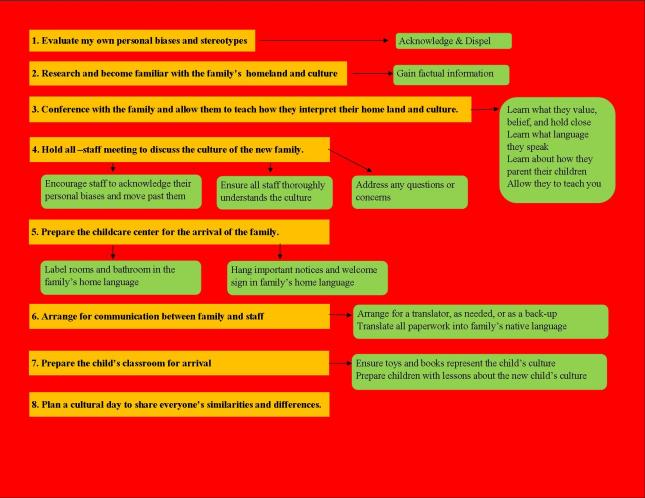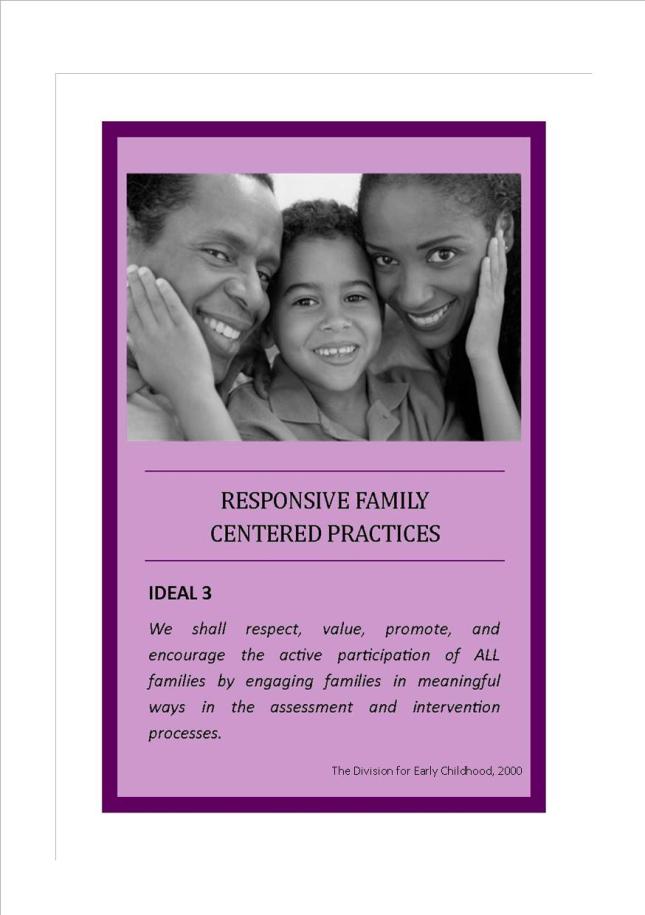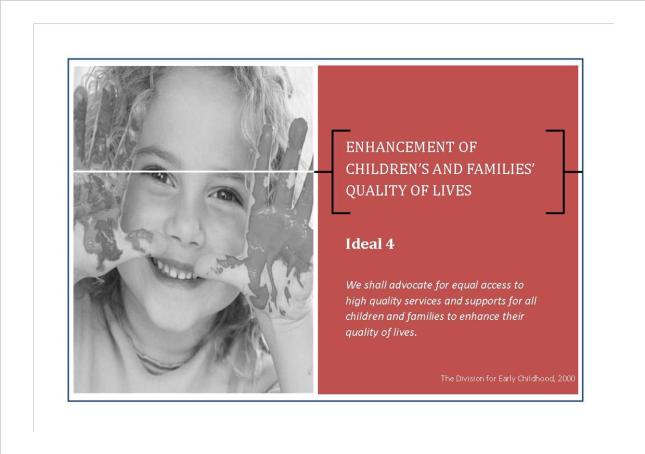(Please note: All people and events are completely fictional and do not portray any real-life situations, children, families, or other individuals.)

Welcome to All About You, an early learning and development center that services young children and their families. We specialize in working in an urban environment, where we proudly represent diversity through children and families from various backgrounds, cultures, and ethnicity. My name is Erin, and I currently oversee all of the classrooms within this center. Part of my job responsibilities is ensuring that each early learning classroom continuously meets the overarching learning and development needs of all children, while adapting and modifying for individual learning styles. In addition, I make sure all of the families we work with are equally represented within our center.
Recently, we received word that we will be soon welcoming a new family from China. Although we are a diverse early learning and development center. we have yet to represent a family from China. We are eager to meet this family and welcome their two young children. However, since we have never worked with a family from this country (and currently know very little about this country), I will be working to prepare myself and my staff to be culturally responsive to this family from the first moment we meet them. Below, you will find an easy-to-follow flow chart that outlines the steps that I will take to meet the cultural and individual needs of this family, as well as an explanation of each step.
 1. Evaluate my own personal biases and stereotypes. One of the most important steps towards becoming culturally responsive to a child and their family is for me to personally evaluate any of my personal biases or stereotypes that I currently hold towards that specific culture. Once I acknowledge these biases and stereotypes, I will be able to dispel them, creating almost like a “clean slate” to learn accurate information about this country, which will also enable me to response to this family from an unbiased point of view.
1. Evaluate my own personal biases and stereotypes. One of the most important steps towards becoming culturally responsive to a child and their family is for me to personally evaluate any of my personal biases or stereotypes that I currently hold towards that specific culture. Once I acknowledge these biases and stereotypes, I will be able to dispel them, creating almost like a “clean slate” to learn accurate information about this country, which will also enable me to response to this family from an unbiased point of view.
2. Research and become familiar with the family’s homeland and culture. Now that I have dispel any previously held misconceptions, I can embrace the correct information about this family’s home country and /*culture. Although this will provide an overall view of the culture, it will at least allow me to gain a general understanding of the background of the country and culture.
3. Conference with the family and allow them to teach how they interpret their homeland and culture. Although I have gained factual information about the family’s home country and culture, it is vital that I conference with the family to allow them to show me which aspects of culture they adopt and which ones they don’t specifically follow. This will allow me to see their family’s culture in relation to the home country and culture. This conference will place me as the student, and the family as the teacher. While I am an early childhood educator, I am not knowledgeable about this particular country and culture. Therefore, allowing the family to adopt the role of teacher will place them in a position of power, creating an opportunity for them to show me how they see their country and culture. This will, hopefully, begin to build a foundation for a relationship and partnership with this family.
4. Hold an all-staff meeting to discuss the culture of the new family, Once I have thoroughly understood the country and culture of this new family, it is imperative that the entire staff adopts this understanding as well. Through an all-staff meeting, there will be opportunities for all staff members to evaluate their own personal biases and stereotypes, replacing them with the correct information about this family’s homeland country and culture. In addition, this meeting will allow ample time to thoroughly understand this new family’s culture, with a period to answer any further questions or concerns. This all-staff meeting will help all staff members to be on the same page in regards to culturaly embracing this family.
5. Prepare the childcare center for the arrival of the family. After all staff members are knowledgeable and aware of this new family’s home country and culture, another important step is to prepare the childcare center for their arrival. This includes labeling all rooms in their home language, so the family will know where to go. If there are important notices hung up around the room, steps should be taken to translate these into the family’s home language so they will feel included in the center.
6. Arrange for communication between staff and family. Once the overall center has been accommodated for the family, it is imperative that communication between the staff and family is arranged. A translator should be contacted prior to the arrival of the family, and arrangements should be made to have this translator available if the family chooses to utilize this service. If there are any take-home notes or family communication papers, efforts should be taken to have these translated into the family’s home language to encourage their participation in their child’s classroom from day one.
7. Prepare the child’s classroom for arrival. Efforts should also be taken to prepare the child’s classroom for arrival. This includes hanging up signs in the child’s home language and ensuring that toys (including dolls) show representation of the child’s culture. Books should be added to the classroom that depict the child’s home country and culture. In addition, the children in the classroom should receive a few lessons about the new child’s home country and culture prior to the child entering the classroom, so they can be prepared and encouraged to welcome this new child.
8. Plan for a cultural day to share everyone’s similarities and differences. Once the family has been welcomed into the center, a cultural day should be planned to show that everyone has similarities and differences. This will allow the new child and family to share about their home country and culture, per their comfort level, and it will enable the new child and family to see all of the similarities and differences the other children and families have to offer. This cultural day is not intended to single out a specific child or family, but rather it is meant to highlight the positive representation of diversity throughout the early learning and development center.
Through taking the above steps, it is my hopes that both the staff (including myself) and the family will benefit. Through learning factual information about the family’s culture and home land, I will be able to correct any biases and stereotypes that I previously held about this family’s culture and country. This will able me to interact with the family and teach the child without biased opinions. Through holding an all-staff meeting. all of the professionals will be able to be on the same page, approaching this child and family with the same information. It will also provide an opportunity for staff members to ask any questions and to dispel any previously held misconceptions prior to this family’s arrival. Creating a center that is accommodating for the family, including posting signs in this family’s home language and arranging for easy communication, will benefit the staff by allowing them to participate in communication with the family. This will create a better relationship and partnership with the family, which will ultimately benefit both the family and the staff. Through taking all of these steps, it is hopeful that the staff will be able to benefit and will become more open and welcoming towards this family.
For the family, allowing them to become the teachers will emit a sense of power for the family. Through doing this, the family will feel more in control of how others see their home country and culture, rather than just succumbing to the stereotypes and biases. This will benefit the family by allowing them to correct the prejudices with correct information. In addition, through preparing the center for the arrival of the family, the family will hopefully feel a sense of pride in seeing their home country and culture represented within the center, which hopefully will encourage their participation. By providing a translator and materials in their home language, the family may also feel more encouraged to participate and to talk with the staff. A cultural day will also benefit the family, by enabling them a time to share with the entire center about their home country and culture, as well as providing them an opportunity to learning about the similarities and differences others have to offer. It is hopeful that taking the above steps all will benefit, contributing to a sense of unity among the center.



